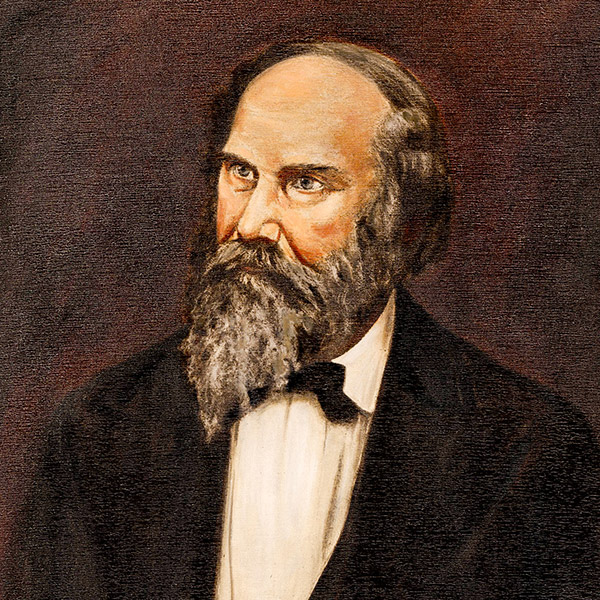Henry Lee Graves
Baylor President, 1846-1851

After a brief search of potential locations for a campus, the Baylor Board of Trustees selected Independence. They then employed Henry F. Gillett as the first faculty member, and named Henry Lee Graves to be the first president. On May 18, 1846, when the doors of the University opened in the partially furnished small frame schoolhouse on the southern edge of Independence, it was Gillette who greeted the twenty-four young boys and girls who formed the preparatory department because Graves had not moved to Independence. The thirty-year-old Connecticut-born Gillett had been in Texas teaching and farming for about six years. For the next nine months, while waiting for Graves to arrive, Gillett directed the operations of the school.
In January, Graves assumed his responsibilities and immediately began planning to expand the curriculum to provide college-level courses. An honor graduate of the University of North Carolina, his native state, Graves had taught mathematics for a while at Wake Forest College and then accepted the call to the ministry. He attended the Hamilton Literary and Theological Institute in New York, after which he moved to Georgia to teach in a Baptist high school in Covington. It was here, at age 32, that he received the invitation to lead Baylor.
Unfortunately, Graves' attempts to strengthen and enlarge Baylor were plagued by a lack of funds and facilities. By the second year of his administration the trustees owed him $1,200 in back salary and they were having great difficulty in paying other bills. However, in spite of a shortage of capital, Graves' courage and vision appeared undaunted--at least at first.
Over the first few years he instituted a department of mathematics and classics, added lectures in law, employed a full-time fund-raiser, and erected the school's first solid masonry building, much of it with his own hands, all the while pastoring the Independence Baptist Church, serving as an officer in the Union Baptist Association, and providing vital leadership to the Baptist State Convention which he helped organized in 1848.
In June 1851 Graves surprised the trustees, as well as the Baptist State Convention delegates who were meeting at Independence for their annual session, by announcing his resignation. He claimed poor health, though some felt it may have been because of the weight of the difficulties associated with running the fledgling school, especially the mounting unpaid bills, the resignation of four of the original trustees and the death of another, as well as the resignation of Henry Gillett because of the "hardships" that he had to endure.
As was the case with the three men credited as founders of Baylor University and the majority of the first Board of Trustees, Graves was a slaveholder. Seven enslaved people worked on his 130-acre farm in Independence, and in 1860, when he was president of Fairfield Female Academy in Fairfield, Freestone County, he owned nine slaves.
At the candlelight session of the Convention on the evening of Graves' resignation, an endowment fund of more than $5,000 was contributed by the delegates to the State Convention. It was the first real outpouring of support from the Baptist denomination for Baylor. Had Graves received this kind of backing, he might have remained at the helm of the institution, perhaps changing the entire history of the University.
Within twenty-four hours, Graves' replacement was picked and had agreed to take over the leadership of the institution. He was twenty-seven-year-old bachelor Rufus Columbus Burleson, pastor of the First Baptist Church in Houston.
